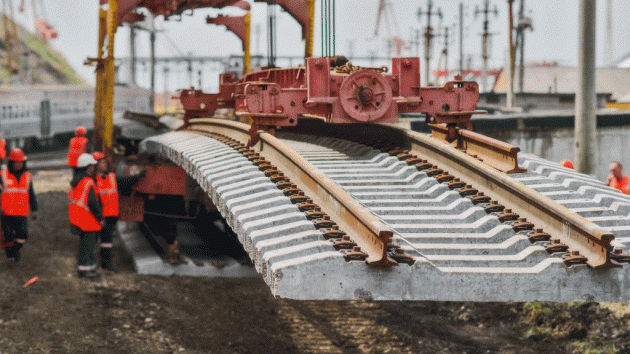Tonci Bakovic, IFC ŌĆō Subsidy on Batteries Can Expedite the Energy Transition and Save Lives
 Wednesday, 09.11.2022.
Wednesday, 09.11.2022.
 12:51
12:51

However, things can change. For that, a shift toward clean energy must be prioritized and integrated into development agendas.
Coal and lignite plants are not limited to the Western Balkans. As a whole, countries in Southeast Europe, including Romania and Bulgaria, rely on hard coal and lignite power plants to generate more than half of their electricity. Southeast Europe also exports electricity to the EU, which means the EU plays a key role in sustaining coal-based electricity in the region. Both coal and lignite generate extreme levels of air pollution. The latter, however, is especially harmful because of its high moisture contentŌĆörequiring to burn more combustible for the same amount of energy produced.
At a time when many governments, confronted with high energy prices due to geopolitical developments and the war in Ukraine, are revisiting their energy transition plans and opting to extend the life cycle of their coal-generation plants, it is useful to reflect on the hidden costs of coal-generation and on concrete solutions that can speed-up the green transition, but require immediate policy action.
Increasing renewable energy capacity in the region, and particularly in tandem with battery storage, needs to be part of that transition. Hybrid renewable-battery storage systems could help displace coal and ensure better balancing of variable renewable energy supply. A combination of solar or wind sources with four-hour batteries can store excess energy and provide sufficient energy to offset for times when there is not enough sun or wind.
Though battery cells have gone down in priceŌĆöfrom $1,200/kW-hour to $100/kW-hourŌĆöin the last decade, a fully built and integrated battery energy storage system remains approximately twice as expensive. Hence, these systems are still years from being competitive in the context of pre-Ukraine war base-load European power prices.
However, given today`s price spikes, volatility and uncertainty in European electricity markets, now seems the perfect time for countries to attract investors to build hybrid renewable-battery energy storage systems. A one-time capital expenditure (capex) subsidyŌĆöa grant from donors or the governmentŌĆöon batteries could be the solution, helping investors offset the extra capital cost, and helping countries accelerate their climate ambitions and pull forward clean energy.
Green Power
With extensive investment experience in deregulated power markets, the International Finance Corporation (IFC), a member of the World Bank, offers global expertise and a platform for competitive, least-subsidy renewable and battery auctions.
Currently, IFC is working on a 100 MW (as part of a phased 500 MW) battery with IEnova (Sempra) in Mexico to export solar energy to California. Prior to the war in Ukraine, IFC partnered with the World Bank and the countryŌĆÖs independent system operator, Ukrenergo, to undertake a modeling exercise to integrate a 200 MW battery to help facilitate UkraineŌĆÖs synchronization with the European electricity grid (ENTSO-E) and support decarbonization of the power sector.
IFC is also supporting Albania to establish an electricity wholesale market (ALPEX), with the hope it will one day couple with other power markets in Southeast Europe to promote exchange and competition in the region, including complementarity of resources and regional decarbonization.
Apart from accelerating the retirement of coal plants with ensuing health benefits, batteries can help with grid stability too. As the penetration of renewables grows, the power grid can become unstable and renewable sources get curtailed (shut down by the power system operator). We have seen this happen with early investments in solar and wind generation in Bulgaria and Romania. This is because it is challenging to maintain the frequency and voltage of the grid when energy supply is intermittent and especially when the wind does not blow, or the sun does not shineŌĆöimagine riding a bike with periods of no pedaling or without rotational inertia.
Furthermore, renewable energy investments in a country tend to precede required grid investments by six to seven years. You can build a solar plant in six months, but it takes six to seven years to build a transmission line because of environmental and social issues, including right of way issues. Who wants a transmission line in their backyard?
In this context, sometimes, instead of building transmission lines, replacing them with batteries could help. When the wires alone cannot keep up with the penetration of renewables, expanding a line or, alternatively, storing energy through a combination of wire and battery could be an effective solution. To better understand, think of a friend who needs to charge his phone, but you are already using the only socket line available and hence he charges from your battery instead.
Going forward, competitive deregulated power markets along with transmission expansion and batteries will be key to the regionŌĆÖs decarbonization process. Given that the EU is targeting 40 percent renewables by 2030, this is Southeast EuropeŌĆÖs chance to accelerate a green transition, helping the region build back better, create jobs, and save lives.
Author: Tonci Bakovic is a Chief Energy Specialist at IFC, a member of the World Bank Group, the largest global development institution focused exclusively on the private sector, www.ifc.org.
Most Important News
06.04.2024. | Agriculture
Preconditions for Placement of Fresh Blueberries and Dried Plums in Chinese Market Secured

16.04.2024. | News
Jovan Ciric, Leasing Director Retail MPC Properties ŌĆō MPC Echo symbolizes our desire for good ideas and innovative endeavors to spread freely and bring about positive changes

16.04.2024. | News
10.04.2024. | Finance, IT, Telecommunications, Tourism, Sports, Culture
Creative Industry ŌĆō What This Serbian Economy Sector Worth EUR 2 Billion Encompasses

10.04.2024. | Finance, IT, Telecommunications, Tourism, Sports, Culture
24.04.2024. | Construction, Healthcare
Price of construction of Tirsova 2 increases to EUR 141.6 million ŌĆō Contract awarded to consortium of 10 companies

24.04.2024. | Construction, Healthcare
16.04.2024. | News
Economy Fair in Mostar opens ŌĆō 26 companies from Serbia exhibiting

16.04.2024. | News
24.04.2024. | Construction, Transport
Dates of publishing of tenders for construction of three sections of fast railroad from Belgrade to Nis known

24.04.2024. | Construction, Transport


 Izdanje Srbija
Izdanje Srbija Serbische Ausgabe
Serbische Ausgabe Izdanje BiH
Izdanje BiH Izdanje Crna Gora
Izdanje Crna Gora


 News
News








